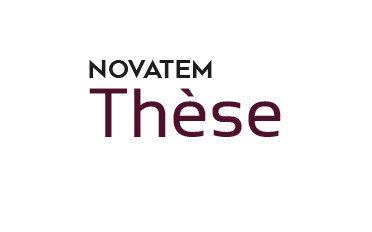Presented and supported by :
M. JOSE IOAV RAMOS CHAVEZ
Discipline or specialty : Electrical Engineering
Abstract
From the more electrically operated aircraft, to the hybridization of motor vehicles, all the way to electromechanic cardiac implants, compactness has become the holy grail of modern embedded electrical engineering. Indeed, the power-to-weight ratio demands for electromechanical systems has greatly increased. To meet these high integration needs, power electronic converters find a vector of development by increasing their temperature and operating frequencies but also by reducing the switching time of power switches, thus enabling them to reduce their power losses and thereby reducing their cooling requirements.
Electric motors and generators operate with various innovative topologies that meet integration, robustness and reliability needs. Motor windings, particularly, are the first motor components on the battle front. It is at the heart of the winding that occur the exchanges between motor and converter. In terms of electromagnetic compatibility (EMC) for embedded systems, the increased frequency and transient stresses in the form of current and voltage edges from the power electronic assemblies are considered steep challenges.
The work presented herein is the result of a close cooperation between the company Novatem and the laboratory Génie de Production of ENIT de Tarbes, through CIFRE funding, in combination with the Labceem platform of IUT of Tarbes.
Its aim is to develop predictive models that will serve to determine the consequences of such integration constraints in power mechatronic systems that are in the early stages of design. Conducted disturbances whose HF source is located at the inverter power switches are shaped by the impedances characterizing the coupling path of which the electrical machine is an integral part. This work proposes to develop methods and tools to support the predictive study of electromagnetic compatibility (EMC) of mechatronic assemblies, by attempting to cover a modeling frequency range that goes from 0 to 300 MHz’s.
In the first chapter of this work, a literature review is detailed for the definition of the context and boundaries of the study. A second chapter focuses on the analytical modeling of concentrated windings in electric motors. The analytical models that are established allow determination of circuit networks settings to perform time- and frequency- domain simulations. Unlike the widespread behavioral models of electrical machine in the literature, the models that are synthesized here take into account the physical parameters of the coils. The user of such models is offered the opportunity to account for the different winding architectures, by changing core parameters such as geometry, insulation materials or permeability. A third chapter describes the establishment of a rational method for extraction of functional and parasitic parameters in multilayer Power PCBs. This method being of a generic and predictive logic aims to account for physical parameters. Finally, in the last chapter, the previously established tools and methods are applied to the study of a real electric vehicle drive system developed by the company Novatem. The physical and predictive value of these tools allows for execution of virtual experimentations on the motorconverter assembly without the need for prototypes. This chapter illustrates the value of a physical approach to modeling the electromagnetic compatibility of mechatronic systems.

